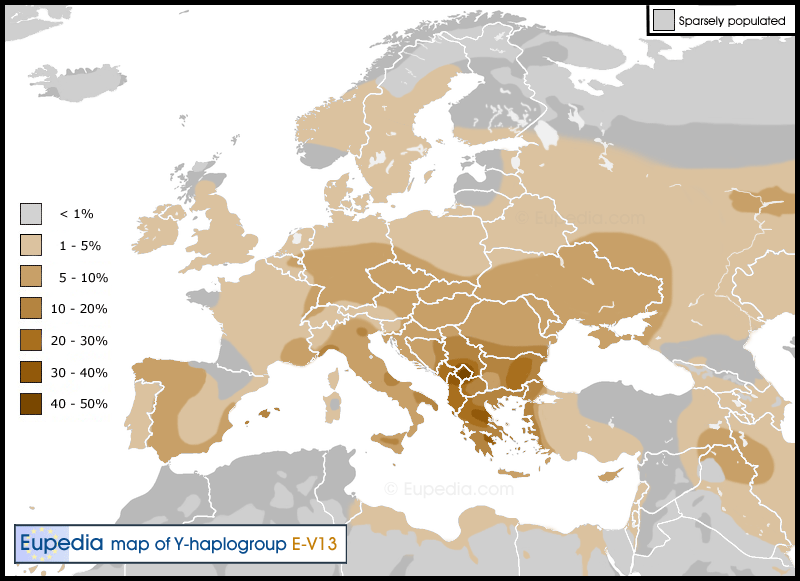And look. From the Middle Bronze Age onwards, Greeks and Albanians experience the same shift from some of their ancient counterparts.
EV-13 and RZ2103 are not Dacian or Thracian or whatever you're spewing. These are markers of the early Bronze age that are common all throughout southern Europe and in the case of RZ2103 to the other side of the Black Sea.
Z2103 has a very broad application. But V13 was found:
In Pshenichevo culture of Bulgaria, 3 out of 3 samples.
In a Moldavian "Scythian" sample, on that site various Thracian pottery and weapons were found, it was surrounded by Thracian/Getae settlements in close proximity. Autosomally it showed a significant affinity to early EIA Babadag find from Dobruja. And Babadag was a sister culture to Pshenichevo. This Scythian together with Z2103 sample descended of a Babadag culture variant in Moldova.
Babadag-Pshenichevo-Basarabi flooded the whole area what would be known as Thracian in antiquity.
Prior to that we have a Steppe R-Z93 find in a MBA/LBA Bulgarian culture. We also have autosomal profile that was more northern in a related LBA Bulgarian culture.
We have other different profiles and Y-DNA lineages in EBA Bulgaria.. No V13 there...
Conclusion: proto-Thracians (Russian sources usually call Dacians just Northern Thracians) were an EIA/LBA group and they were E-V13 heavy and they caused replacement and displacement of the old pre EIA population in Thracian areas.
3000 year old E-L539 with more Steppe profile was found in a very Eastern Gava culture from the Hungarian-Slovakian-Ukrainian border area.
4000 year old E-L539 with slightly more Steppe than Mokrin was found in Eastern Hungary. Either the Nyirseg or Gyulavarsánd cultures. Also it seems there there is some 4000 year old J2a low steppe sample. It seems some of these cultures in NW Romania was rather very EEF heavy, and this was the reason for Thracians being so "Southern". Also it seems while one E Gava had more Steppe, another R-L51 from the same site had the opposite profile, much closer to Getae-Thracians.
These samples are most important, and from what I get, very few samples are from there, but instantly they showed E..
I use this SNP information from the leaked information, but it almost 100 % certain these were not V12 or V22... One can hardly claim there were any such lineages at that time in the whole area..
Anyway as soon as they test more in Eastern Hungary, in NW Romania, they are going to find the flood of E-V13..
So V13 in BA Hungary should very common but only East of Tisza river. V13 has absolutely little or nothing to do with anything West of Tisza, and especially not anything West of Danube. Anything West of that are either some extremely isolated branches or IA migrants.
All in all regarding the nonsensical claims of your friend Bruzmi, V13 and L283 were never found together pre late Antiquity. And as there are quite a lot of sites already it seems these two were totally different populations.
All in all it seems by all available evidence that the vast majority of proto-Thracians were V13+. Z2103 rather in a far more limited sense.




